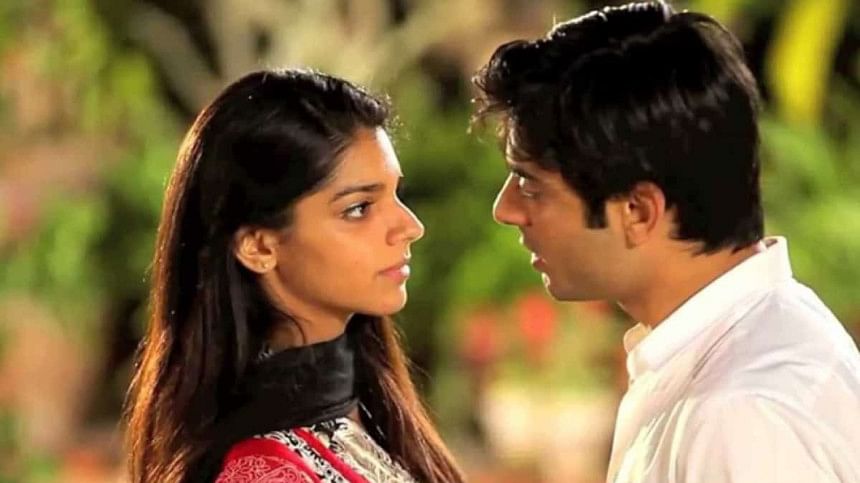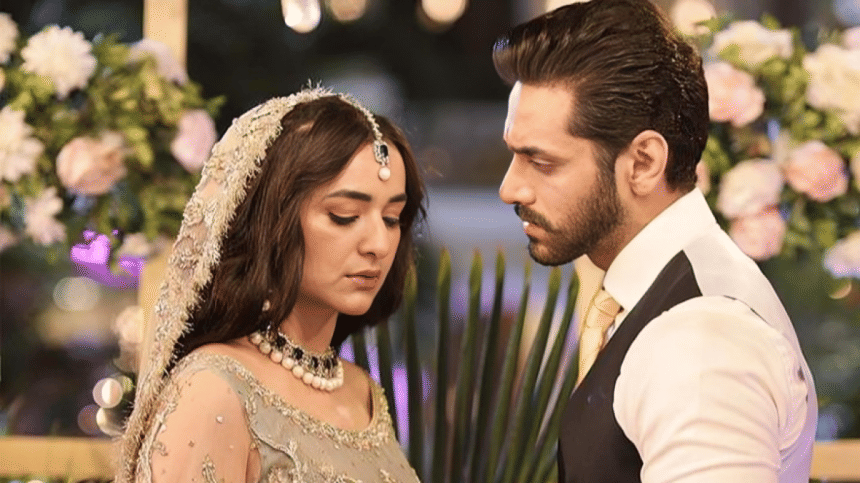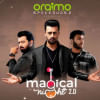Understanding Gen Z’s newfound obsession with Pakistani dramas

Pakistani dramas, once a peripheral cultural product in this region, have seemingly surged in popularity among Gen Z viewers in Bangladesh. Not in a nostalgically indulgent way, but with the kind of fervent devotion that leads to 1-billion-view YouTube milestones, fan edits on Instagram, and TikTok videos that reimagine tearful climaxes as memes. The real question is no longer whether this trend is genuine, it is, but rather why now?
To begin understanding this shift, it helps to situate it in the broader media landscape Gen Z occupies. This is a generation that has grown up in the aftermath of cable TV, not during its prime. Their screen consumption habits are shaped by YouTube, streaming platforms, fan culture, and algorithmically served content. Their sensibilities have been formed amid K-drama wave aesthetics, slick Netflix originals, and short-form emotional gratification. But within this hyper-globalised buffet, what Pakistani dramas offer is curious intimacy, a return to familiar cadences, values, and conflicts that resonate without having to be explicitly local.

Shows like "Tere Bin", "Meem Se Mohabbat", and "Kabhi Main Kabhi Tum" have amassed staggering viewership numbers, crossing hundreds of millions, even billions, largely driven by South Asian diaspora and regional viewership, including from Bangladesh. But unlike the cross-border popularity of Bollywood, which has long depended on spectacle and star power, the appeal of these dramas is rooted in something more specific — their emotional efficiency. Pakistani dramas operate in a tightly controlled format of 25–30 episodes, rarely more. They don't house seasons upon seasons of filler content, but rather the stories get to the emotional core quickly and remain there. For a generation living in a digital attention economy—where every click is a competition—the economy of storytelling is not just a feature, but a selling point.
There is also a notable shift in aesthetic contrast. Where Bangladeshi television often veers into the didactic or the melodramatic, and Bollywood is preoccupied with scaling Hollywood metrics, Pakistani dramas manage to occupy a middle ground. They are sentimental but restrained, romantic but not fantastical, dramatic but grounded. This creates a viewing experience that feels emotionally honest without feeling outdated, a balance that seems increasingly rare. It is not that the characters are paragons of modernity, but that they are enmeshed in dilemmas that are easily recognisable in the South Asian context. The workplace frustrations, intergenerational tensions, unspoken social taboos, and class anxieties all feel eerily familiar. For Gen Z viewers raised in a complex, rapidly shifting socio-cultural environment, there is comfort in narratives that reflect not an idealised future, but a textured present.

The visual language is a key element too. Pakistani dramas tend to have softer palettes, more naturalistic sets, and a lingering technique of cinematography that lets the viewer breathe between emotional beats. In a region where television productions often feel like a war between overproduction and underfunding, the relative aesthetic consistency of Pakistani content, even with modest budgets, is not lost on young viewers who are visually literate in the language of cinematic cues. However, perhaps the most interesting dimension of this shift is what it reveals about the state of Bangladeshi media consumption.
The rise of Pakistani drama viewership in Bangladesh is not merely a story of external influence but a mirror held up to internal stagnation. For years, local television dramas have failed to capture the imagination of young viewers. The industry seems designed to remain in survival mode, relying on predictable plotlines, outdated tropes, and a reluctance to evolve beyond the formulaic, rather than delivering genuine surprise. While the theatre tradition and certain web-series have shown promise, they have not translated into a consistent, robust pipeline of content that speaks to the dreams, disillusionments, and daily lives of Bangladeshi youth. In contrast, Pakistani dramas, for all their limitations, offer a thematic currency and are emotionally legible in a way local content often is not.
There is a cross-border factor at play here, too, one that is quietly political. With the complicated history between Bangladesh and Pakistan, there has always been a cultural ambivalence — a simultaneous sense of familiarity and distance. But Gen Z, growing up in a digital space far more porous than previous generations, does not carry the same historical weight in their cultural choices. Their engagement with Pakistani content is filtered not through the lens of geopolitics but through storytelling, aesthetics, and emotional relatability. It does not signal a forgetting of history, but rather an evolution of its influence.

The decision to watch "Parizaad" or "Zindagi Gulzar Hai" is rarely about allegiance; it's about taste. Gen Z's cultural map is borderless, not because they lack nationalism, but because they are tired of being told what that nationalism should look like. They do not see watching a show from Lahore as any more politically fraught than streaming a series from Seoul. The platform is YouTube, the language is Urdu, the sentiment is South Asian, and the impression is global.
The irony is, in looking abroad to Pakistan, we may actually be staying closer to home, at least emotionally, than when consuming American sitcoms. What is clear, at least for now, is that across Dhaka, Chattogram, and Khulna, young viewers are sitting with their phones, watching carefully lit scenes of complex emotional negotiations unfold in Urdu. And in doing so, they are not just consuming stories but quietly rewriting the story of regional viewership itself.

 For all latest news, follow The Daily Star's Google News channel.
For all latest news, follow The Daily Star's Google News channel. 









Comments